Chapter: 11th Computer Science : Chapter 2b : Boolean Algebra
Boolean Algebra
Boolean Algebra
Introduction
Boolean algebra is a mathematical discipline
that is used for designing digital circuits in a digital computer. It describes
the relation between inputs and outputs of a digital circuit. The name Boolean
algebra has been given in honor of an English mathematician George Boole who
proposed the basic principles of this algebra.

1. Binary valued quantities:
Every day we have to make logical
decisions:
1. Should I carry Computer Science
book every day? Yes / No
2. 8-10 = 10 is this answer
correct? Yes / No
3. Chennai is capital of India?
Yes / No
4. What did I say yesterday?
The first three questions thrown
above, the answer may be True (Yes) or False (No). But the fourth one, we
cannot be answer as True or False. Thus, sentences which can be determined to
be True or False are called “Logical Statement” or “Truth Functions”. The
results True or False are called “Truth Values”. The truth values depicted by
logical constant 1 and 0; 1 means True and 0 means False. The variable which
can store these truth values are called “Logical variable” or “Binary valued
variables” or “Boolean Variables” as these can store one of the two values of
True or False.
2. Logical Operations:
Boolean algebra makes use of
variables and operations (functions). The basic logical operations are AND, OR
and NOT, which are symbolically represented by dot ( . ), plus ( + ), and by
over bar / single apostrophe respectively. These symbols are also called as
“Logical Operators”.
3. Truth Table:
A truth table represents all the
possible values of logical variable or statements along with all the possible
results of given combination of truth values.
4. AND operator
The AND operator is defined in
Boolean algebra by the use of the dot (.) operator. It is similar to
multiplication in ordinary algebra. The AND operator combines two or more input
variables so that the output is true only if all the inputs are true. The truth
table for a 2-input AND operator is shown as follows:

The above 2-input AND operation is
expressed as: Y = A . B
5. OR operator
The plus sign is used to indicate
the OR operator. The OR operator combines two or more input variables so that
the output is true if at least one input is true. The truth table for a 2-input
OR operator is shown as follows:
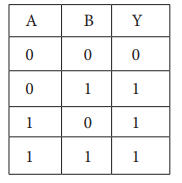
The above 2-input OR operation is
expressed as: Y = A + B
6. NOT operator
The NOT operator has one input and
one output. The input is either true or false, and the output is always the
opposite, that is, the NOT operator inverts the input. The truth table for a
NOT operator where A is the input variable and Y is the output is shown below:
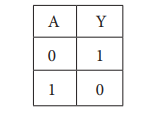
The NOT operator is represented
algebraically by the Boolean expression:
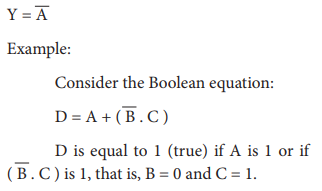
Otherwise D is equal to 0 (false).
The basic logic functions AND, OR,
and NOT can also be combined to make other logic operators such as NAND and NOR
7. NAND operator
The NAND is the combination of NOT
and AND. The NAND is generated by inverting the output of an AND operator. The
algebraic expression of the NAND function is:

The NAND function truth table is
shown below:
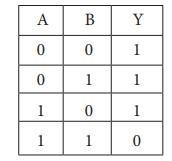
A NAND B = NOT (A AND B)
8 NOR operator
The NOR is the combination of NOT
and OR. The NOR is generated by inverting the output of an OR operator. The
algebraic expression of the NOR function is:

The NOR function truth table is
shown below:
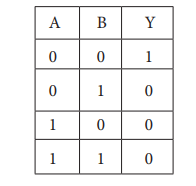
A NOR B = NOT (A OR B)
Related Topics